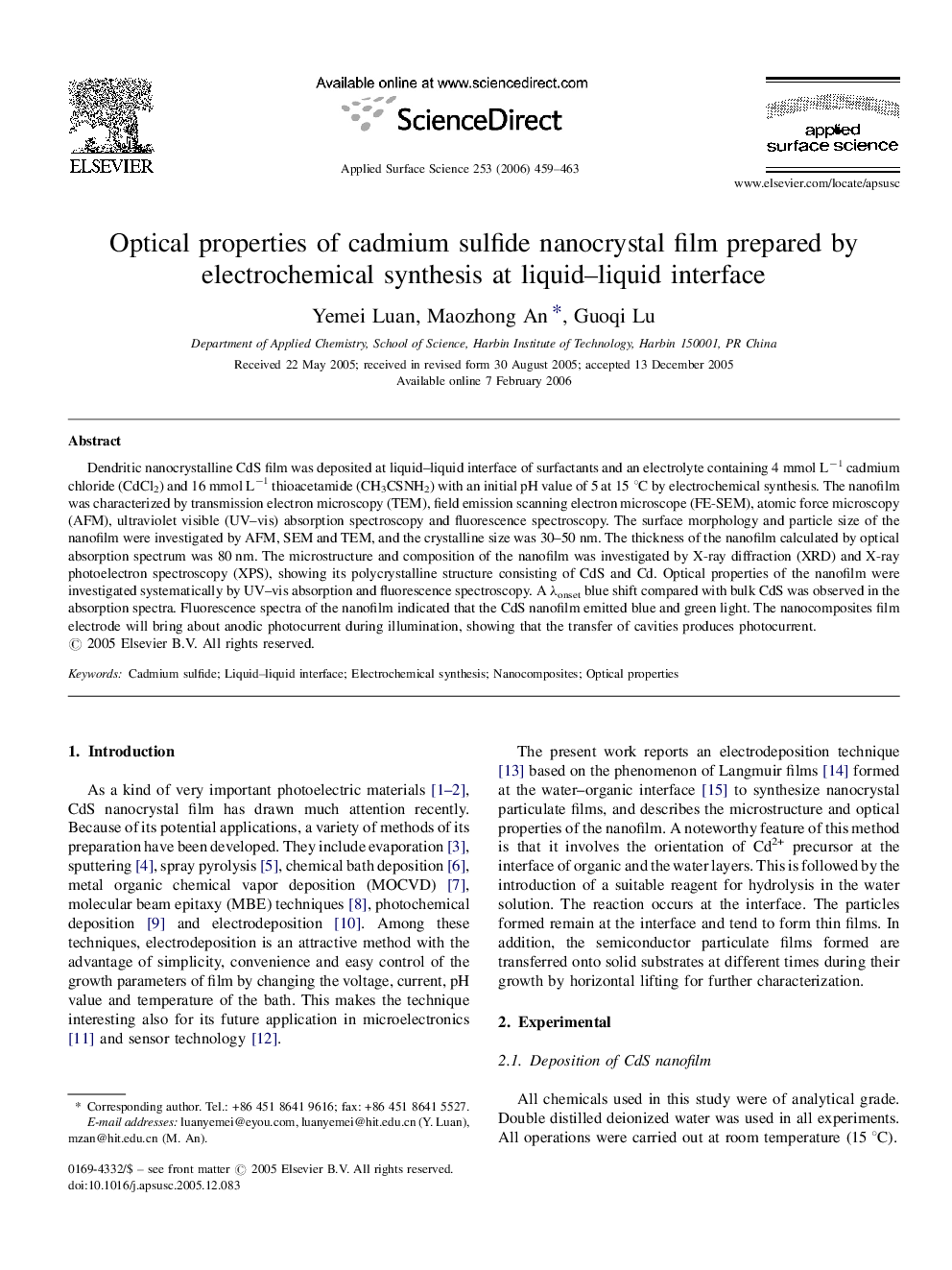| Article ID | Journal | Published Year | Pages | File Type |
|---|---|---|---|---|
| 5370217 | Applied Surface Science | 2006 | 5 Pages |
Dendritic nanocrystalline CdS film was deposited at liquid-liquid interface of surfactants and an electrolyte containing 4 mmol Lâ1 cadmium chloride (CdCl2) and 16 mmol Lâ1 thioacetamide (CH3CSNH2) with an initial pH value of 5 at 15 °C by electrochemical synthesis. The nanofilm was characterized by transmission electron microscopy (TEM), field emission scanning electron microscope (FE-SEM), atomic force microscopy (AFM), ultraviolet visible (UV-vis) absorption spectroscopy and fluorescence spectroscopy. The surface morphology and particle size of the nanofilm were investigated by AFM, SEM and TEM, and the crystalline size was 30-50 nm. The thickness of the nanofilm calculated by optical absorption spectrum was 80 nm. The microstructure and composition of the nanofilm was investigated by X-ray diffraction (XRD) and X-ray photoelectron spectroscopy (XPS), showing its polycrystalline structure consisting of CdS and Cd. Optical properties of the nanofilm were investigated systematically by UV-vis absorption and fluorescence spectroscopy. A λonset blue shift compared with bulk CdS was observed in the absorption spectra. Fluorescence spectra of the nanofilm indicated that the CdS nanofilm emitted blue and green light. The nanocomposites film electrode will bring about anodic photocurrent during illumination, showing that the transfer of cavities produces photocurrent.
